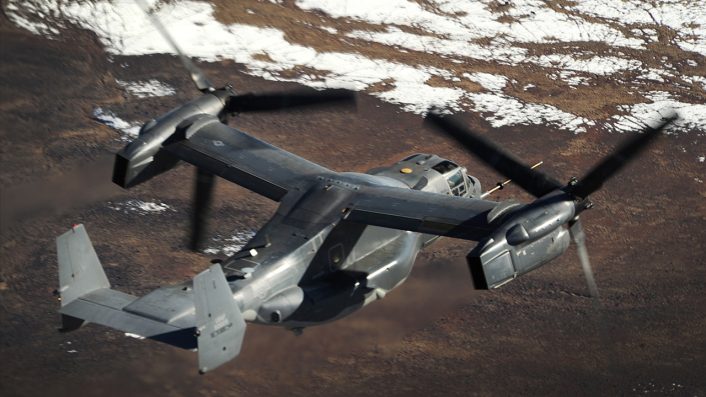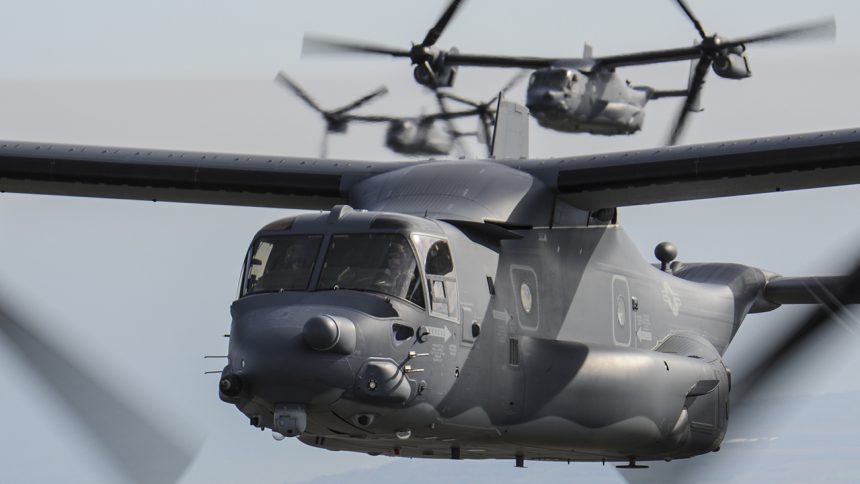The risk posed by the clutch problem will not be eliminated until a complete redesign is done, which could take more than a year.
The V-22 Osprey tilt-rotor will not return to “full, unrestricted flight operations” anytime soon, but it will continue to fly with restrictions until the U.S. military replaces the faulty clutch with a newly designed one. These restrictions will possibly be extended across the fleet, as the aircraft is used by the U.S. Navy, U.S. Marine Corps, U.S. Air Force and the Japan Ground Self-Defense Force (JGSDF).
This was revealed by U.S. military officials in a hearing before the House Oversight Committee on Jun. 12, 2024. The crash of a USAF CV-22 on Nov. 29, 2023 off the coast of Japan, that killed eight airmen, led to a three-month safety stand down of about 400 Osprey tiltrotors. That accident was the fourth fatal mishap in just over two years.
As it will be explained subsequently, the clutch has not been said to be the reason behind the latest crash, despite being responsible for earlier mishaps. Investigators have identified another component (the ‘what’) and are investigating the reason (the ‘why’) it failed.
The Aviationist reported that Osprey flights would resume in Japan in a “gradual” manner, following the first such flight in March in proximity of their air bases. The “phased” resumption would be synchronized with training and proficiency of pilots and, crews on new operating and maintenance procedures.
Recurring clutch issue
The Nov. 2023 crash was attributed by defense officials to a “part” failure, but the officials did not identify the component, according to Air and Space Forces. However, it appears that the V-22 Joint Program Office would still undertake the clutch replacement, as it had been responsible for previous crashes. The Naval Air Systems Command chief, Vice Adm. Carl Chebi, also did not name the part in his testimony, but he did describe it as a “catastrophic material failure that we have never seen before in the V-22 program.”
V-22s often experience a problem called a “hard clutch engagement,” where the clutch slips, causing a fail-safe system to transfer power from one engine to the other. The clutch then re-engages, generating enormous spikes in torque. The Air Force previously grounded its fleet of CV-22s after multiple instances of hard clutch engagements.
The fault was also blamed in one of three deadly Marine Corps crashes since 2022. That accident, in Jun. 2022, killed five Marines when the clutch problem caused a failure in the right engine during a training flight over Glamis, California.
The V-22 has seen 19 instances of hard-clutch engagements over the life of the program. Since 1991, ten Osprey crashes have occurred killing 57 personnel.
Military.com quoted USMC officials from the V-22 JPO, who said they disassembled clutches from their own V-22s and found the “input quill assembly” as one of the “likely culprits.” A new prototype of the assembly, with 15 design changes, was scheduled to be ready by June. The USMC operates roughly 350 Ospreys in 17 squadrons.

Restrictions remain on full operations
The decision to field the newly designed clutch, accompanied by the secrecy behind revealing the faulty component in the Nov. 2023 crash might seem contradictory. Chebi’s statement, however, might indicate that this is a new kind of failure and not a hard clutch engagement, which remains nevertheless a concern for the V-22 fleet.
That part could be the propeller rotor gearbox that investigators are looking into, as per a Feb. 20 NBC News report. The probe has now narrowed down to “why” that gearbox malfunctioned. However, previous restrictions that curtailed the Osprey’s from operational sorties remain. These limited the Ospreys to fly for not more than 30-minutes and only around a suitable airfield where they would be able to return to, in case something went wrong.
On Mar. 13, 2024, the Japanese Ministry of Defense announced that the JGSDF and the U.S. Military are working towards gradually resuming regular operations of the MV-22s in the country. Japan is the sole foreign operator of the Osprey. The USMC flies the MV-22B, the US Navy operates the CMV-22 while the US Air Force has the CV-22B.
Prior to that announcement, on Mar. 8, NAVAIR (Naval Air Systems Command) lifted the grounding order on the V-22 Osprey fleet, while the AFSOC (Air Force Special Operations Command) announced a “phased approach” to resume flying its CV-22 following the three-month pause.
By May, the Air Force had cleared only some of its CV-22s to resume flights. This was part of what officials said would be a “deliberate” approach with more thorough, frequent maintenance checks and new procedures for emergency situations. All those restrictions and new procedures won’t be going away anytime soon, Chebi told lawmakers.
Chebi added that the risk posed by the clutch problem will not be eliminated until a complete redesign, which could take more than a year. Restrictions on Osprey flights would continue until then. “I will not certify the V-22 to return to unrestricted flight operations until we have sufficiently addressed the issues. Based on the data that I have today, I’m expecting that this will not occur before mid-2025,” he said. Chebi has also ordered a comprehensive review of the Pentagon’s Osprey program, which will take another six to nine months.









